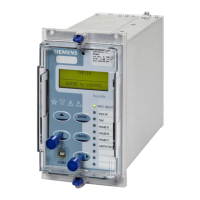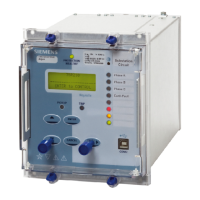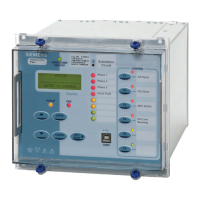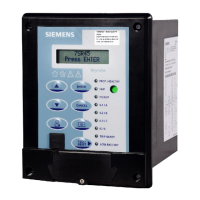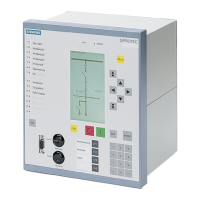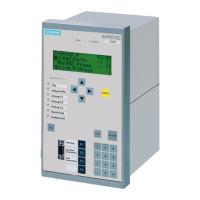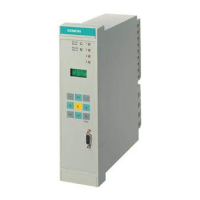7SR18 Applications Guide
Unrestricted ©2018 Siemens Protection Devices Limited Page 45 of
Shown graphically it is clear that it would be advantageous to reduce the bias slope.
20%
0.15
0.333
0.666
Restraint Current
Differential Current
0.075
Restrain
Operate
Figure 7.5.2-4 Settings for correct Load Bias
To allow operation of the relay for this minimum earth fault the Bias Break Point must be set to 1.0 x I
N
or above.
A setting of 1 x I
N
, rather than 1.5 x I
N
, would be selected as this help lower the CT requirements. The Figure
below, Figure 7.5.2-5, shows the effect of settings applied for detecting earth faults on resistance earthed
systems. It also shows the fault point for the above example:
Where the relay is used on interconnected systems and the fault current is fed from both ends of the
feeder (double end fed) the phase comparator will generally operate.
DifferentialCurrent(xI
N
)
Restraint Current (x I
N
)
MAGNITUDE
COMPARITOR
STABLE
Bias Break Point Settings
0.5
1.0 1.5
MAGNITUDE
COMPARITOR
OPERATION
Fault Sensitivity for Resistance Earthed Sytems
B
i
a
s
S
l
o
p
e
2
=
1
5
0
%
Figure 7.5.2-5 Setting of Bias Break Point for Load Bias
Figure 7.5.2-6 to Figure 7.5.2-8 show typical values chosen for the P/F Differential, Bias Slope 1 and Bias Break
Point settings to allow an earth fault with some load biasing to be detected. Three typical relay settings used for
resistance earthed systems are shown graphically, to assist with selecting appropriate settings.
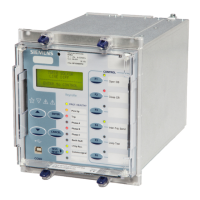
